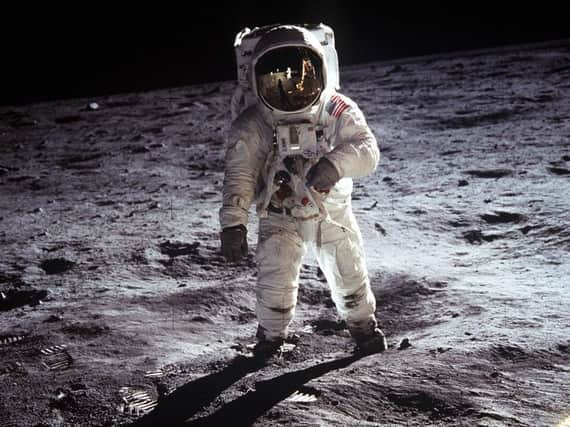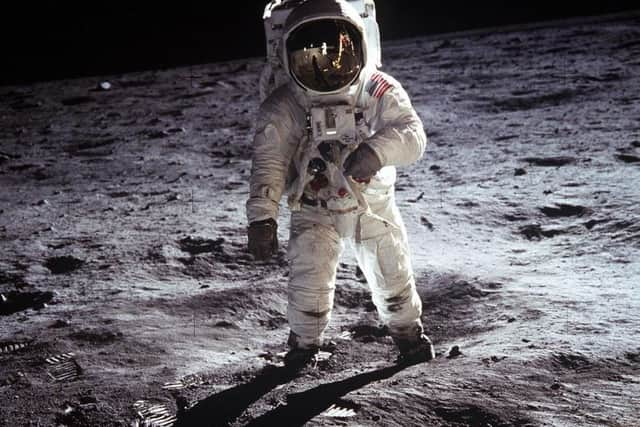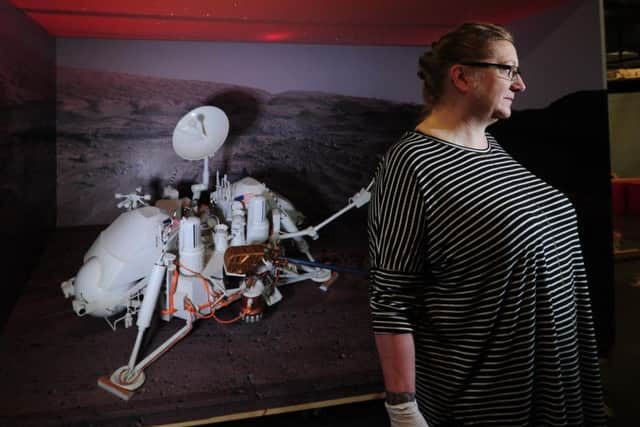Bradford's National Science and Media Museum space exhibit opens amid moon landing anniversary


-> How man got to the moon: The extraordinary story of the Apollo 11 missionTomorrow, Mike Dinn will be live over Skype at the museum for a screening of The Dish (2000), which tells the story of the unprecedented images of Neil Armstrong being received in Australia when NASA discovered the station in California could have problems with positioning.
Mr Dinn was born in Little Horton, Bradford, in 1933, but grew up to become Deputy Station Director at the Honeysuckle Creek Tracking station in Australia, part of NASA's Manned Spaceflight Network, during Apollo 11 in 1969.
Advertisement
Hide AdAdvertisement
Hide AdAnd the Hello Universe exhibition, which is set in two galleries, will feature a rare item that went into orbit with the mission's spacecraft - a checklist, signed by Buzz Aldrin, used by the astronaut and his co-pilots.
The museum's curator of sound technologies, Annie Jamieson, said: "It literally was on the moon lander."
She added: "It's an exhibition that we've tried really hard to make very family-friendly but also to be aware that families have adults in them too."
The exhibition takes an interactive look at how information from the cosmos has been recorded over hundreds of years, and in particular the five decades of space exploration that followed Armstrong’s momentous "giant leap".It also coincides with the Bradford Science Festival, which last year attracted around 30,000 people.
Advertisement
Hide AdAdvertisement
Hide Ad-> In pictures: 50 years since launch of Apollo 11 mission to put man on the moonThe exhibition will focus on how technology was developed to transmit live pictures a quarter-of-a-million miles back to earth, including the role of Mr Dinn and his team at the communications station in Canberra, which received the images of the historic moment and made them available for broadcast across the earth’s TV networks.


Also featured in the museum's exhibition are a range of objects related to space travel from the 1960s to the present day, from the personal collection of Mark Wrigley from Sheffield, a trustee of the Institute of Physics.
His interest in science and technology stemmed from watching the 1969 event live on television as a schoolboy. He filmed the screen with a Super 8 camera, in the days before domestic TV recording technology existed, and this footage will also be displayed alongside items of memorabilia.
Interactive elements include building LEGO spacecrafts, top stargazing tips from the West Yorkshire Astronomical Society, and a chance to create a bulletin in the style of the Arecibo interstellar radio message which was transmitted from earth in 1974.
Advertisement
Hide AdAdvertisement
Hide AdDisplays include a half-size scale model (2.3m x 1m) of Viking, NASA’s first Mars lander, and the latest, most detailed images of the cosmos projected onto a 5m x 3m screen, giving families the chance to journey through the solar system and beyond, looking at the ways stars and planets are viewed and understood.


Data from NASA’s Pioneer, Voyager and Cassini missions demonstrate how much information people have received from space over the past 40 years, and photographs from NASA’s Voyager probes will be included in the exhibition, on loan from the National Space Centre.
The exhibition will also show people how they can get a career in astronomy and related fields, or get into it as an amateur.
Speaking about the contribution of those who are not astronauts, Ms Jamieson said: "It took 400,000 people to put two men on the moon and one in orbit."
Mr Dinn will be appearing on Skype from 5.30pm tomorrow at the museum, and there will be a Q&A after the film.
The exhibition opens today and lasts until January 22 2020.